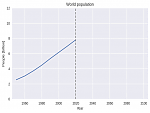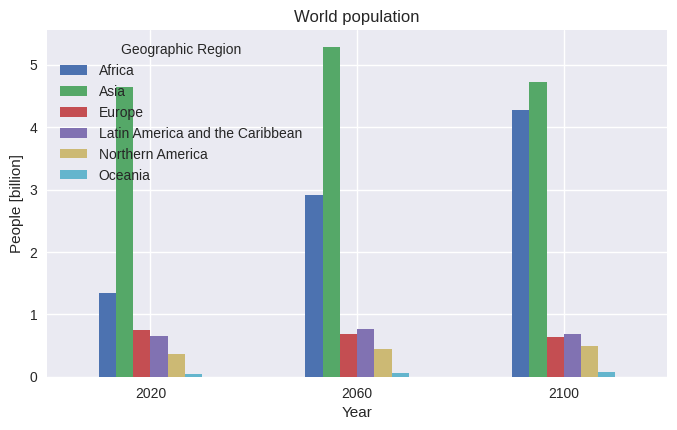19. April 2020
Factfulness, Straight Line Instinct & World Population
 “Factfulness” is a fantastic book, remaining as current as it was when I purchased it. It gives us “ten reasons we’re wrong about the world and why things are better than you think”. Today, I am going to have a look at the Straight Line Instinct and the forecasted world population growth.
“Factfulness” is a fantastic book, remaining as current as it was when I purchased it. It gives us “ten reasons we’re wrong about the world and why things are better than you think”. Today, I am going to have a look at the Straight Line Instinct and the forecasted world population growth.
Factfulness is a good book. I agree here with Bill Gates, who wrote that Factfulness is one of the most educational books I’ve ever read. What is it about? The book lists ten instincts that lead you to a distorted view about the world, and then takes you through an entertaining journey on how to avoid being misled in the future.
Take a guess! How many billion people do you think will live on this planet by 2060? And how many by 2100? Maybe the following chart will help you in coming up with an estimate…

One of ten instincts in the book is the Straight Line Instinct. You might have been on your guard, and already guessed that the world population will not grow in a straight line or otherwise the question would have been less interesting.
The Straight Line Instinct describes the tendency of people to assume that trends follow straight lines. The book here starts with debunking the misconception that the “world population is just increasing and increasing”, and very effectively so. For example, the authors (Hans Rosling, Ola Rosling, and Anna Rosling Rönnlund) are showing reports that the population of children on this world is no longer growing much already today.
Factfulness goes into much more details than I will here. All I will do in the following is to show the official population forecasts by the United Nations, the World Population Prospects 2019. I downloaded the data from undata; this data is accessible to everyone, and while I have created my own plots (using this Colab notebook), you can look at the charts yourself!
What does this data say on how the world population changes between 2020 and 2100? Below is the medium variant of the forecast. Of course, as you might have guessed, the population growth─while fast─is forecast to slow down. The trend in world population does not follow a straight line.

There are many more interesting things to find in the data. In which regions of the world is the population growing? This is one of the questions that can help us avoid thinking that population growth is happening everywhere.

We can see that most of the growth to come is predicted to be in Africa (see also the bar chart below for easier comparison over time). Be aware here, however, that Africa is not a country). There are many countries in Africa, and I would not expect the population growth to be the same among the countries in Africa. You can find out yourself.

The conclusion: a trend might not follow a straight line. If you like what you saw in this article, head over to gapminder.org and find out more about the world. I keep finding out more about what I did not know about the world. Learning something new is among the things that excites me the most.